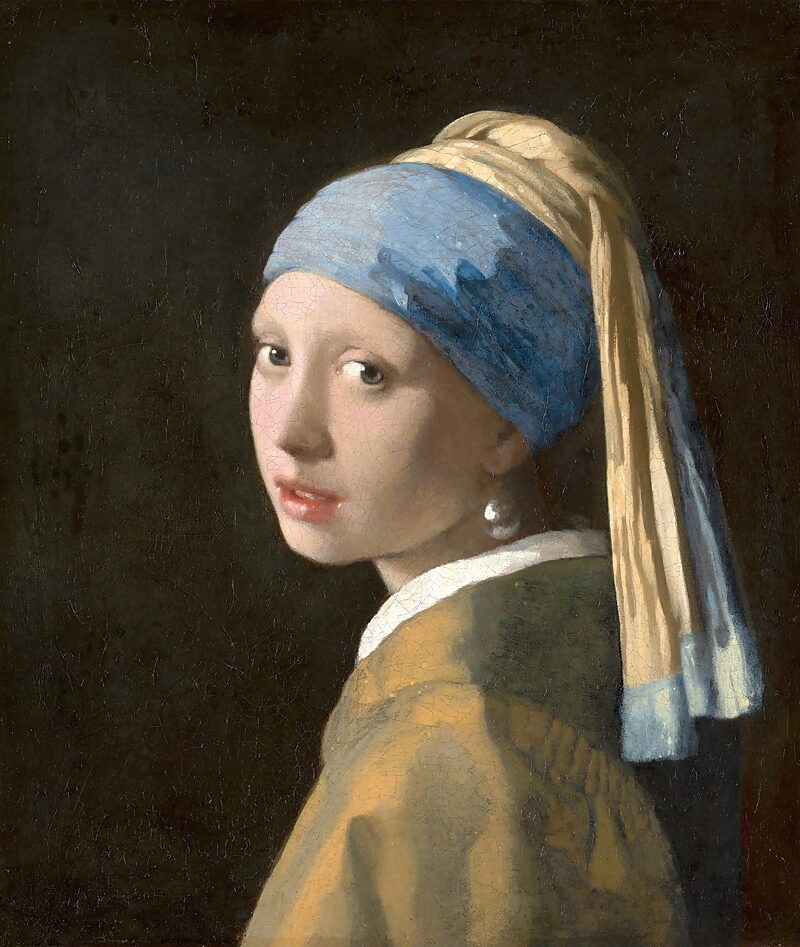
Above: MANCHESTER, ENGLAND – NOVEMBER 23: A cyclist rides past a mural of Cristiano Ronaldo near Old Trafford Stadium. This week, the club released a statement indicating the Glazer family, who are majority owners of the club, said they will consider selling up. The announcement came on the same day the club announced its star player, Cristiano Ronaldo, was leaving with immediate effect. (Photo by Christopher Furlong/Getty Images)
Look at the history of portraiture, and you’ll notice something curious: teeth are rarely on show. Perhaps you’ll spot the hint of a coy tooth through parted lips (think Vermeer’s Girl with a Pearl Earring) or the odd snaggletooth in a drunken leer (see Frans Hals’s Yonker Ramp and His Sweetheart), but you’ll rarely – if ever – see a complete, toothy smile in traditional portrait painting.

Frans Hals’s Yonker Ramp and His Sweetheart, 1623

Johannes Vermeer’s Girl with a Pearl Earring, 1665
That changed in the twentieth century, but not for the reason that you might think. It turns out that the well-rehearsed narrative of disgusting teeth is a fallacy. Yes, toothpaste hadn’t been invented, and people were less savvy about the effects of sugar, but that’s probably not why artists rarely painted teeth. The real reason was the time it took to sit for a portrait. Imagine holding a natural, open-mouthed smile for hour after hour: by the time the work was finished, it’d look more grimace than a grin.
The mural of Cristiano Ronaldo, painted on the wall of a pub near Old Trafford Stadium in Manchester, was, presumably, painted from a photograph rather than from life. His mouth reveals a set of perfect, pearly white teeth (the kind that his non-negotiably high salary could buy him), fixed in a dazzling smile in perpetuity. But it’s an expression that feels a little off this week after his break with Manchester United and subsequent ban from two domestic matches for knocking a phone out of an Everton fan’s hand.
According to art historian Nicholas Jeeves, there are two main modes of expression in traditional portraiture: ‘the serious and the smirk’. Why? Apart from the sitter’s tired grimace, there’s also the fact – as Ronaldo’s portrait reveals – that the happy grin just isn’t transcendent enough. How can we take the mural seriously now that Ronaldo has stomped off from Manchester United? A serious stare – or even a fuck-you smirk – would somehow have felt more convincing in the current circumstances.
Then again, we should remember that the mural is street art – an ephemeral form that’s not made to last (unlike, say, a painting on canvas). Ronaldo’s fleeting smile may be as short-lived as the artwork itself – and as brief as his return to his former club. With Ronaldo out, and United up for sale, one wonders if the mural will still be there in a week.
Whether it gets painted over or not, the mural has been granted one version of eternal life by Christopher Furlong’s camera – but what does this photo, taken on November 23rd, do to the painting? For one thing, the photograph crops out the broader context: we can’t see the street, or the rest of the pub, only the hellish halo of red, oozing into black, that encircles Ronaldo’s huge bronzed face.
And then there’s the figure of the cyclist, who adds not only a sense of scale but a certain solemnity: clad all in black, his expression sombre, there’s something almost funereal about his presence. Perhaps he’s mourning Ronaldo’s departure. Perhaps not. In any case, the cyclist’s gaze turned firmly away from the mural, which has more in common with the serious faces of classical portraiture, serving only to heighten the absurdity of Ronaldo’s massive grinning head.

Frans Hals’s Yonker Ramp and His Sweetheart, 1623

Caravaggio’s St Jerome Writing, 1605-06
If Furlong’s photo reminds me of any painting from history, it’s Caravaggio’s exquisite Saint Jerome Writing – a comparison that, I’ll admit, feels sacrilegious. But there is something in it – the void-like black background, the shocking flash of Jerome’s scarlet robe, the bronzed tones of skin and wood – and the skull, set to the left and staring morbidly out of the frame like our black-clad cyclist. No teeth, though, in the painting because Caravaggio’s Saint Jerome is serious, profound, sublime – and made to last. Ronaldo, alas, is not.


